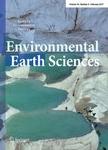版权所有:内蒙古大学图书馆 技术提供:维普资讯• 智图
内蒙古自治区呼和浩特市赛罕区大学西街235号 邮编: 010021

作者机构:Meteorol Coll 7-4-81 Asahi Cho Kashiwa 277-0852 Japan Meteorol Res Inst Tsukuba Japan
出 版 物:《ENVIRONMENTAL EARTH SCIENCES》 (环境地质学)
年 卷 期:2024年第83卷第13期
页 面:417页
核心收录:
学科分类:0830[工学-环境科学与工程(可授工学、理学、农学学位)] 0709[理学-地质学] 081803[工学-地质工程] 07[理学] 08[工学] 0708[理学-地球物理学] 0818[工学-地质资源与地质工程] 0815[工学-水利工程]
基 金:Meteorological Research Institute Japan Meteorological Agency MRI
主 题:Earth system model Net primary production Drought Crop failure El Nino
摘 要:We used the Meteorological Research Institute Earth System Model to investigate land precipitation and net primary production (NPP, proxy for agricultural production here) in terms of food and water security. In the preindustrial state, the largest decrease in Southeast Asian precipitation ( 20%) occurs along with the largest El Nino and positive phase of the Atlantic multidecadal oscillation, consistent with the 1876-78 Great Drought, leading to the largest decrease in NPP (similar to 20%);2 standard deviations, extreme dryness and crop failure. In relatively arid regions (e.g., India and northeastern Brazil), the largest decreases in precipitation and NPP reach = 50%, particularly 80 similar to 90% in Deccan, India. In the 21st century warming projection (Shared Socioeconomic Pathways 5-8.5, the largest CO2 emission scenario), the interannual variability of precipitation and NPP in Monsoon Asia increase under the influence of enhanced El Nino-Southern Oscillation. Although the increased precipitation variability indicates more frequent severer droughts than in the preindustrial state, this severity does not influence NPP so much: the increased NPP variability is negligible compared to the significant increase in normal NPP by CO2 fertilization effect, which indicates usually rich harvests. Compared to a recent severe crop failure (- 25% in Japan in 1993), the simulated preindustrial drought-induced NPP decreases of = 50% in parts of low latitudes are extraordinarily large enough to correspond to devastating crop failures. The model indicates that great famines before the 20th century were natural in origin, and that manmade factors, such as harsh taxes and hoarding and export of grain, made the famines more devastating.